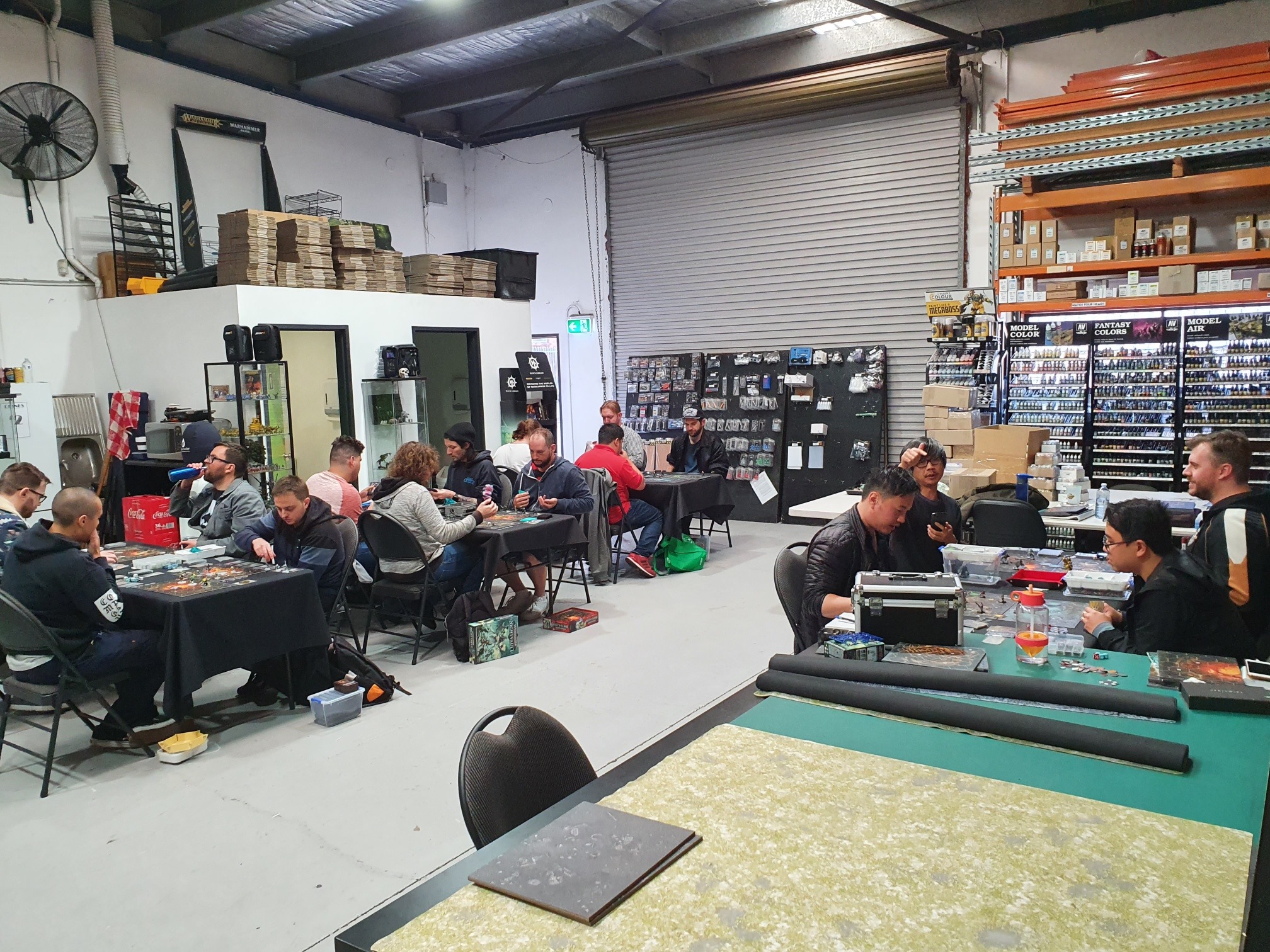
Building for the meta – Pt.1
Hello and welcome to the first entry of The Gloryseekers blog. I’m Jacko, I play Warhammer Underworlds and sometimes appear on the Tabletop Sydney channel. This blog will contain some of our musings and updates on the Warhammer Underworlds competitive scene in Sydney.
Some background
Recently The Combat Company, a friendly gaming store in the Sydney area hosted a 17 person Warhammer Underworlds tournament. This is big considering no tournaments near this size has been run for Warhammer Underworlds since Covid-19 sent us all home.

I brought to the event the Godsworn Hunt – which isn’t exactly considered the strongest warband right now in the Direchasm season. But, with a bit of meta-gaming and some luck, managed to make it to #1 (on tiebreaker).

Why I play Godsworn?
Well the easy answer: I am simply an agent of Chaos.
… but there’s a bit more to it and there is a method to the madness. To understand my deck choices and reasoning, we need to understand Meta-gaming. If you’ve played games competitively, you already know this, but for the casuals and less experienced competitive players, lets go into detail.
Metagaming?
Metagaming (or Meta in short) is the game behind the game. It’s the use of real life knowledge regarding the state of the game, to gain an advantage. Which warbands are strong, what cards are popular all change over time and vary by location.
The rules of the tournament may even dictate what you play. For example in tournaments that measure glory difference as a tiebreaker, you may consider playing Annihilation in your deck to stack that glory difference in your favor.
Tournament makeup
In the Sydney meta, Morgok’s, Rippa’s and Crimson Court are the most popular warbands. The actual makeup of the tournament was close enough to what was expected:
- Morgok’s Krushas x3
- Crimson Court x2
- Rippa’s Snarlfangs x2
- Godsworn Hunt (me)
- Zargag’z Gitz
- Drepur’s Wraithcreepers
- Grymwatch
- Ylthari’s Guardians
- Khagra’s Ravagers
- Chosen Axes
- Morgwaeth’s Blade Coven
- Mournflight
- Garrek’s Reavers
What stands out is the top 3 most popular warbands Morgok’s Krushas, Crimson Court and Rippa’s Snarlfangs takes up essentially ~41% of the tournament. Almost all players in this 3 round tournament, would have needed to play against at least 1 Crimson Court, Morgok’s Krushas or Rippa’s Snarlfangs warband.

Malganis inspired Crimson Court 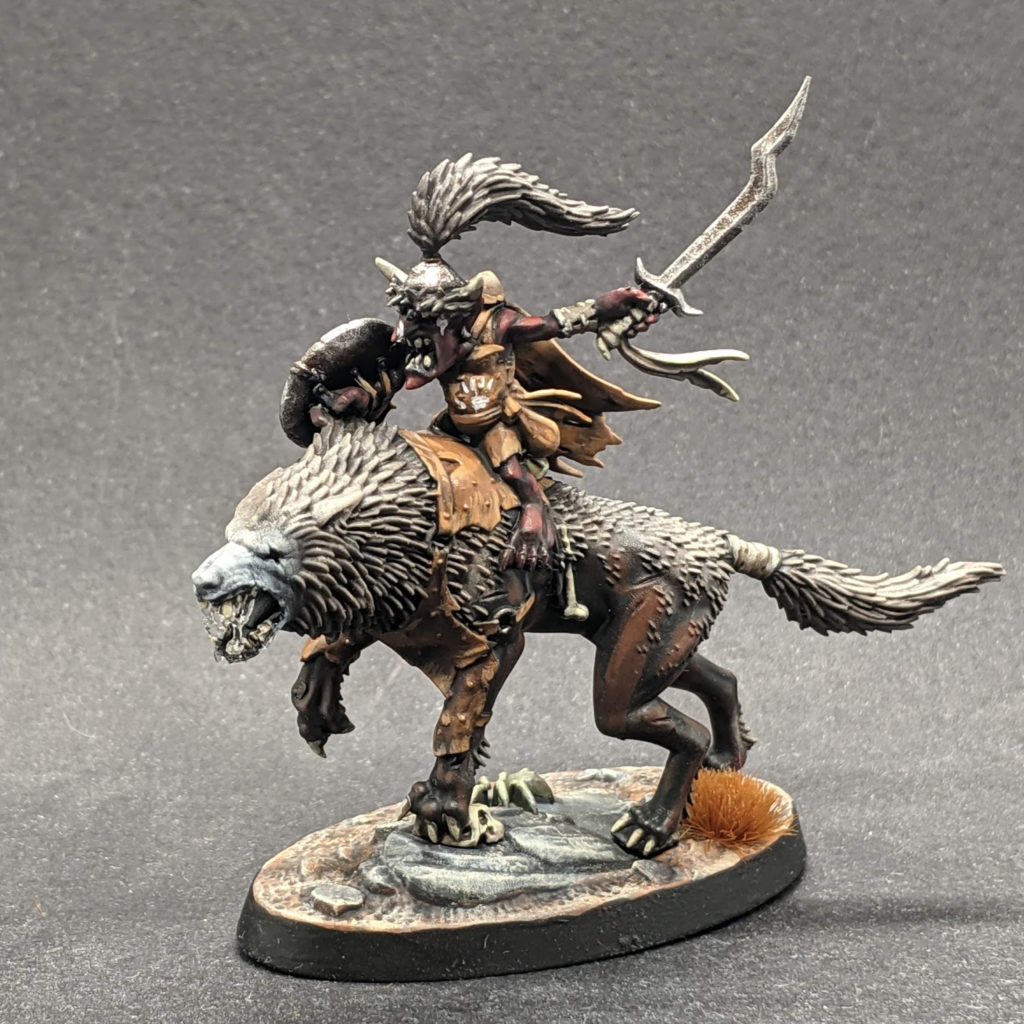
Rippa the Warg Rider 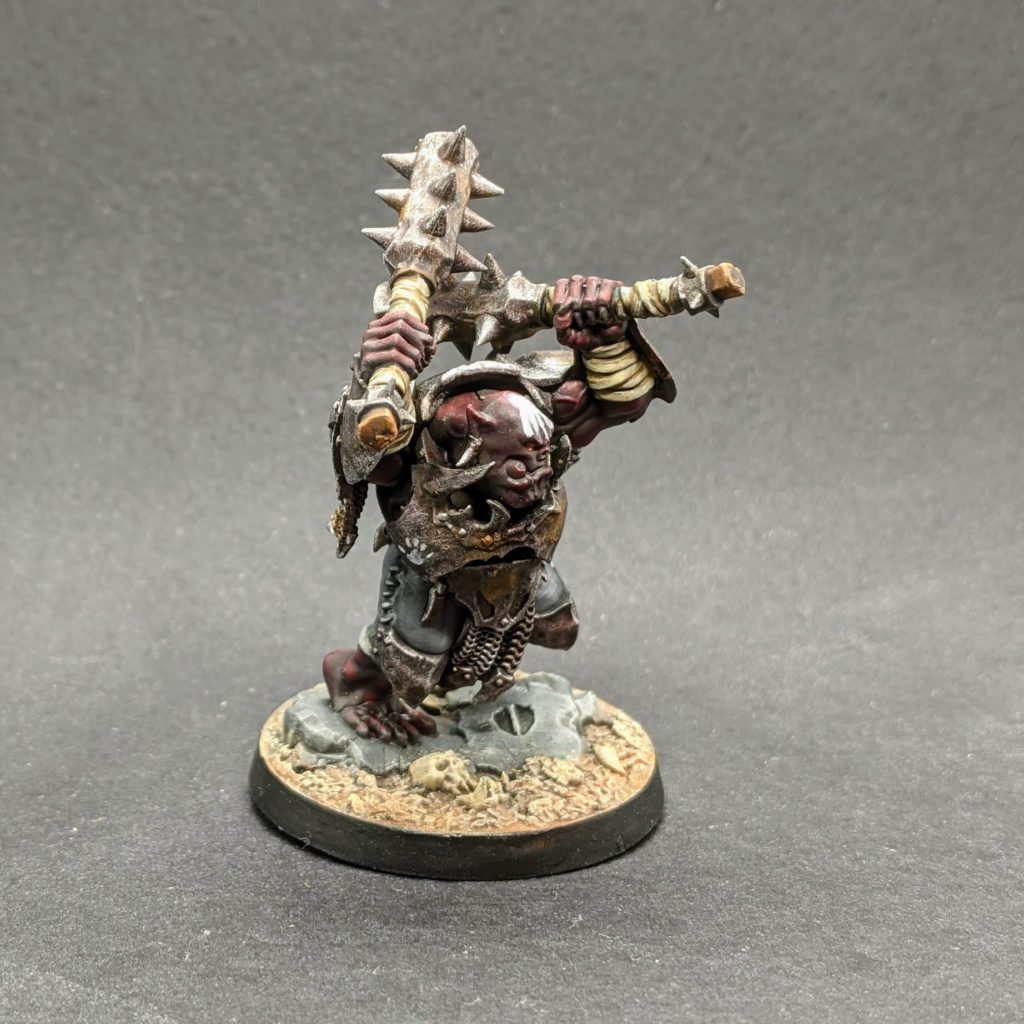
Thugg the Orruk Hai
Strong Warbands?
Not surprising that 3 most played warband happen to generally be considered strong warbands. It is a tournament and people are trying to win – a strong warband helps increase your chances of winning, makes perfect sense. Each of these 3 warbands have strong fighters and faction cards, as well as objectives that score big and/or score easy. Nothing wrong with playing what is effective at winning.
But is there a downside to playing the popular / strongest warbands? Kind of, yes, and these downsides will vary depending on your competitive environment and how effectively players in your area adapt.
- Players are likely to practice against the strong warbands and their tactics. Which means they are more likely to understand how your warband works and what faction gambits you might be bringing.
- Players are more likely to bring tech cards and hate cards that are effective against your warband or your type of warband (more on this below).
Playing weaker / less popular warbands can have the opposite effect. Players are less prepared and knowledgeable in your matchup and you actually invalidate some of their tech cards. For example, players packing [![]() Gloryseeker]
Gloryseeker]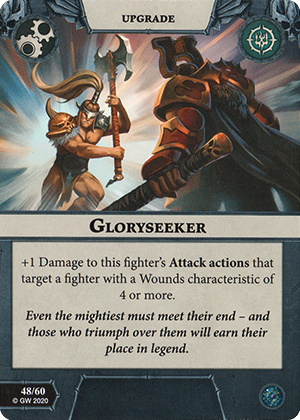 in their deck will find that it’s a dead card against the Godsworn Hunt.
in their deck will find that it’s a dead card against the Godsworn Hunt.
Tech cards? Hate cards?
Copied from the Hearthstone Wiki: A tech card is a card added to a deck specifically in order to counter the current meta. Tech cards may be simply alternate inclusions in the deck, or sub-par substitutions the use of which is borne out by their effectiveness in the meta.
OK back to Underworlds. The top 3 Warbands have a few things in common, each low model count Warbands with 4+ wounds per fighter.
One example of a tech card is [![]() Gloryseeker]
Gloryseeker] . It’s a good card, but it’s not effective against every warband (i.e practically useless against Myari’s Purifiers for example). But because the most popular warbands in Sydney are all 4+ wound warbands, Gloryseeker becomes far more effective. Going back to the warband list earlier, Gloryseeker is only ineffective against:
. It’s a good card, but it’s not effective against every warband (i.e practically useless against Myari’s Purifiers for example). But because the most popular warbands in Sydney are all 4+ wound warbands, Gloryseeker becomes far more effective. Going back to the warband list earlier, Gloryseeker is only ineffective against:
- Godsworn Hunt (no 4+ wound fighters)
- Zarbag’s Gitz (no 4+ wound fighters)
- Grymwatch ([Crackmarrow]
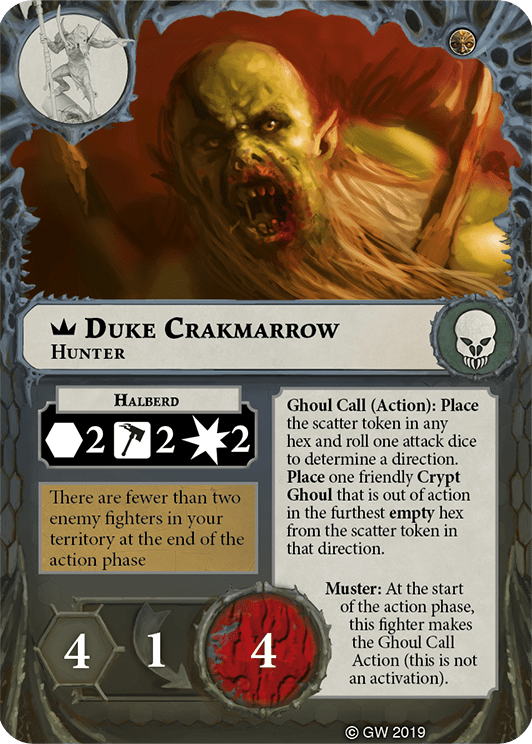 is usually positioned in the hardest place to reach).
is usually positioned in the hardest place to reach). - Ylthari’s Guardians (The only [4+ wound fighter]
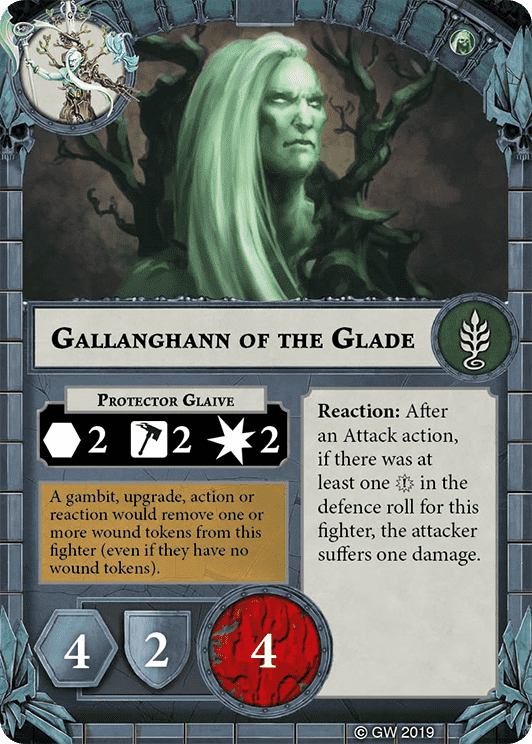 they have is typically the one you don’t want to be attacking as he can damage you on defence and is hard to hit).
they have is typically the one you don’t want to be attacking as he can damage you on defence and is hard to hit).

So what about cards that are more narrow in their purpose? We’re talking about hate cards. Rather than being useful against a broad category of Warbands, Hate cards target a specific set of Warbands and strategies. For example two cards below I would call hate cards, [![]() Leech Stone]
Leech Stone]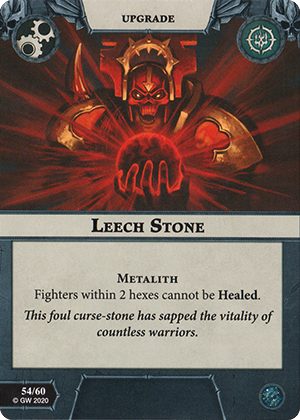 and [
and [![]() Lost in Reflection]
Lost in Reflection]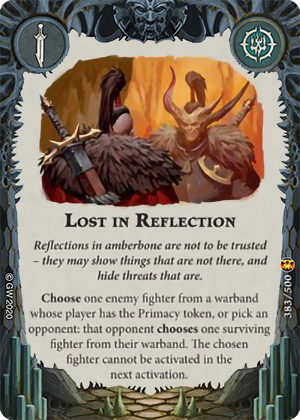 .
.

No heals 4 u 
All that text translates to “If your opponent has the primacy token, your opponent doesn’t get to do what they wanted to do”
I considered Leech Stone as a hate card against Crimson Court vampires and cards like [![]() Ferocious Resistance]
Ferocious Resistance]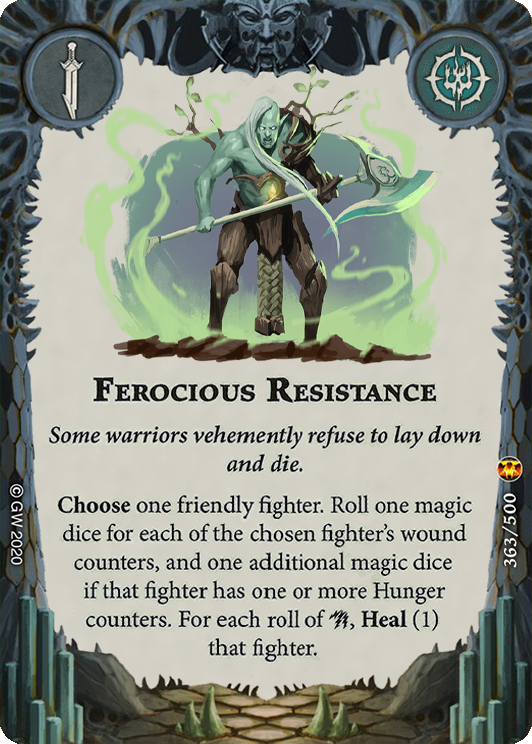 (usually packed in [Mollog]
(usually packed in [Mollog]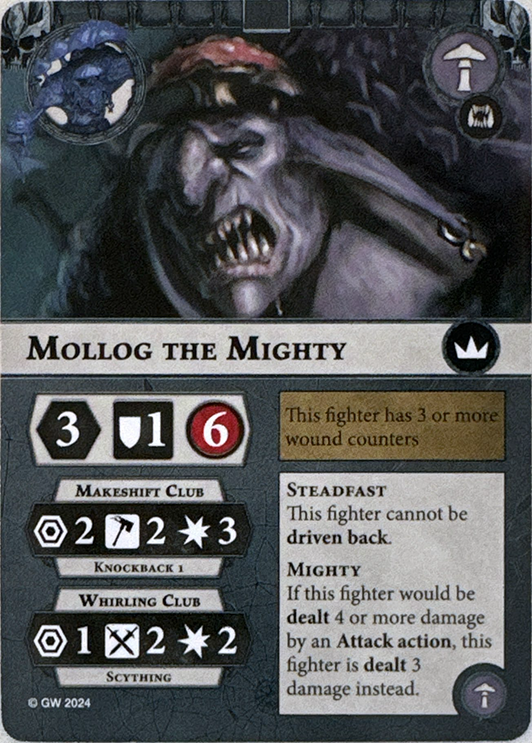 or [Hrothgorn]
or [Hrothgorn]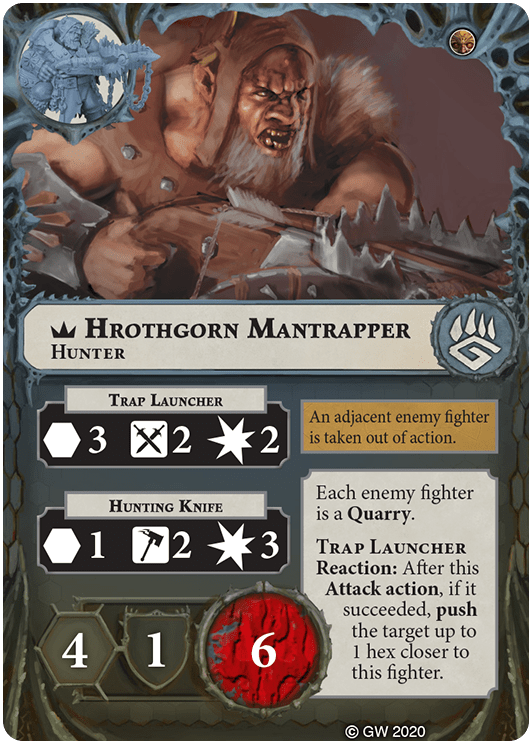 decks), but ended up dropping it as I needed the upgrade slots for other cards. I did end up facing a Vampire and Ylthari warband in the tournament and having an option to block their healing would have made the matches a lot easier. In my experience Underworlds players in general still shy away from hate cards, but this may change over time.
decks), but ended up dropping it as I needed the upgrade slots for other cards. I did end up facing a Vampire and Ylthari warband in the tournament and having an option to block their healing would have made the matches a lot easier. In my experience Underworlds players in general still shy away from hate cards, but this may change over time.
Lost in Reflection is another hate card that is effective against low model count warbands that often take primacy (e.g Rippas, Crimson Court, Krushas). You can use it to disrupt next activation ploys such as [![]() Victimise]
Victimise]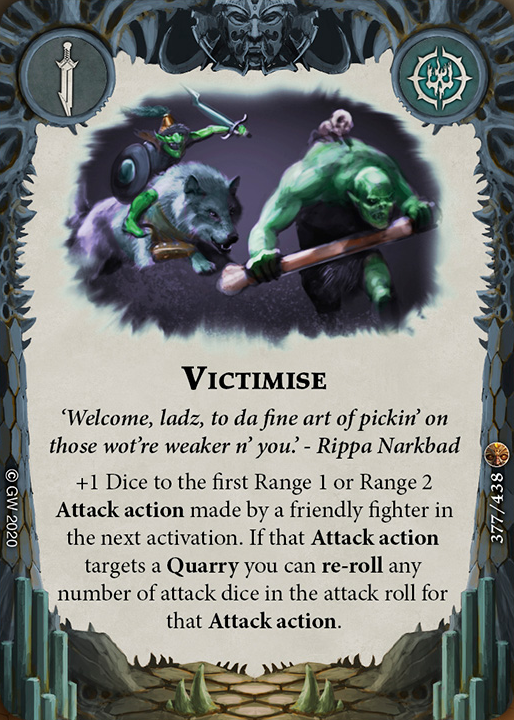 by forcing them to not activate a specific fighter. However this card is near useless against warbands with large numbers of fighters, that don’t take primacy and/or don’t need to charge to attack you.
by forcing them to not activate a specific fighter. However this card is near useless against warbands with large numbers of fighters, that don’t take primacy and/or don’t need to charge to attack you.
The Godsworn Hunt deck I ultimately ended up with can be found here on Underworlds DB. In part 2, I will go into more details with the card choices, why there’s [![]() Daylight Robbery]
Daylight Robbery]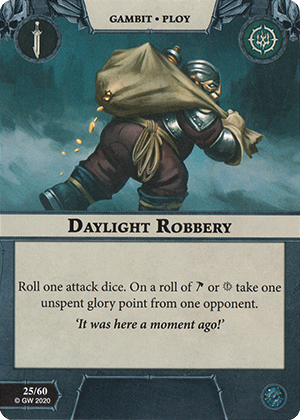 and [
and [![]() Rebound]
Rebound]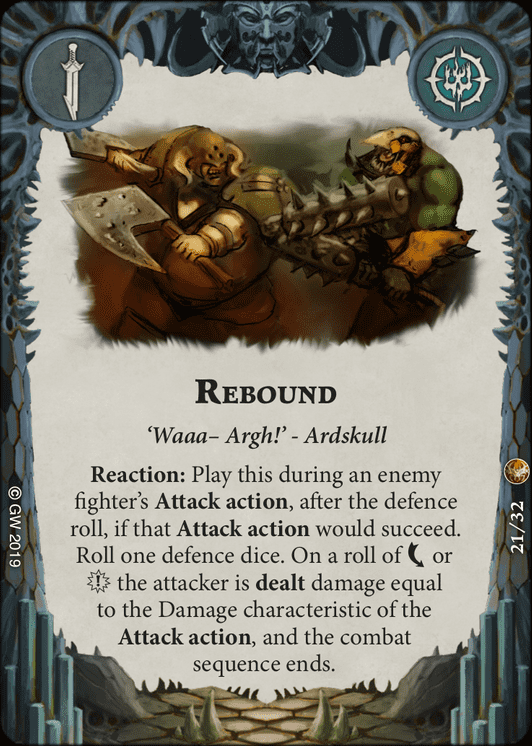 in there (there’s a method to the madness I promise) and some recollections about my matches.
in there (there’s a method to the madness I promise) and some recollections about my matches.
Signing off – Jacko
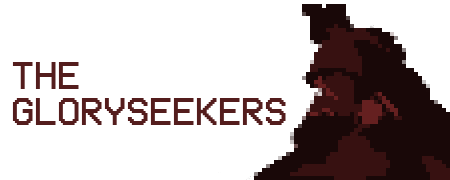
One Reply to “Building for the meta – Pt.1”